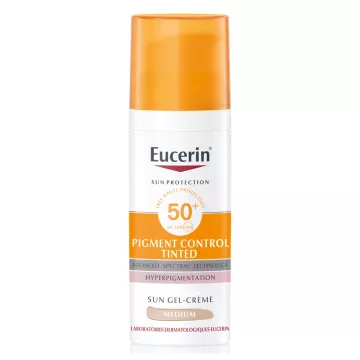

What is melasma and what are its main symptoms?
Melasma is a dermatological condition characterized by the appearance of pigmentation spots, usually on the face. These spots are typically darker than the skin's natural complexion, and appear mainly on the cheeks, forehead, nose and upper lip. Melasma is particularly common in women, especially during pregnancy, sometimes earning it the name "pregnancy mask". Spots are usually symmetrical and brownish in color.
What causes melasma?
The causes of melasma are multifactorial, but sun exposure is considered the main trigger. UV rays stimulate melanocytes, the cells responsible for melanin production, leading to hyperpigmentation. Other factors include hormonal changes (notably during pregnancy or due to oral contraceptives), stress, and genetic predisposition.
How can melasma be prevented?
Melasma is best prevented by protection against UV rays. We recommend daily use of a broad-spectrum sunscreen with a protection factor of at least 30. Wearing wide-brimmed hats and protective clothing can also help reduce sun exposure. Avoiding peak sun hours, usually between 10am and 4pm, is also an effective strategy.
What treatment options are available for melasma?
Treatment of melasma can include the use of topical creams containing depigmenting agents such as hydroquinone, tretinoin, or azelaic acid. Dermatological procedures such as chemical peels, microdermabrasion and laser treatment can also be effective in reducing hyperpigmentation. It's crucial to consult a dermatologist to devise a suitable treatment plan and prevent the spots from worsening.
Can melasma disappear completely?
Melasma is a chronic condition that can be difficult to treat. Although symptoms can be significantly reduced with appropriate treatments and rigorous sun protection, it's possible that the spots won't disappear entirely. What's more, melasma can reappear, especially if the skin is re-exposed to triggers.
What role do hormones play in the appearance of melasma?
Hormones have a significant impact on the development of melasma, especially female hormones such as estrogen and progesterone. These hormones can stimulate melanocytes to produce more melanin when the skin is exposed to sunlight. This is why melasma is frequently associated with pregnancy, and can also be observed in women taking hormonal contraceptives or hormone replacement therapy.
Are there differences in the prevalence of melasma between ethnic groups?
Yes, melasma is more frequent and often more pronounced in darker-skinned people or those from regions where the climate is generally sunnier. Ethnic groups such as Hispanics, Asians, Middle Easterners and people of African descent have a higher prevalence of this skin condition due to the greater activity of melanocytes in these populations.
What impact does melasma have on the quality of life of those affected?
Although melasma is not a painful condition or directly harmful to physical health, it can have a significant impact on quality of life. The appearance of pigmentation spots can affect self-esteem and cause emotional distress, particularly for those for whom appearance plays an important role in professional or personal life. Treatments can improve both physical appearance and emotional well-being.
How are natural treatments perceived in the management of melasma?
Some natural treatments can be used to reduce melasma, although their effectiveness is not as well established as medical treatments. Ingredients such as aloe vera, lemon juice and apple cider vinegar are sometimes recommended for their skin-lightening properties. However, it's important to use them with caution, as they can make the skin more sensitive to the sun, exacerbating the problem.
Can melasma be completely prevented?
It's difficult to completely prevent melasma, especially if genetic or hormonal factors are involved. However, the best prevention strategy is to minimize sun exposure and use sun protection products regularly. Avoiding known triggers, such as certain contraceptive pills or hormone treatments, can also reduce the risk of melasma developing.